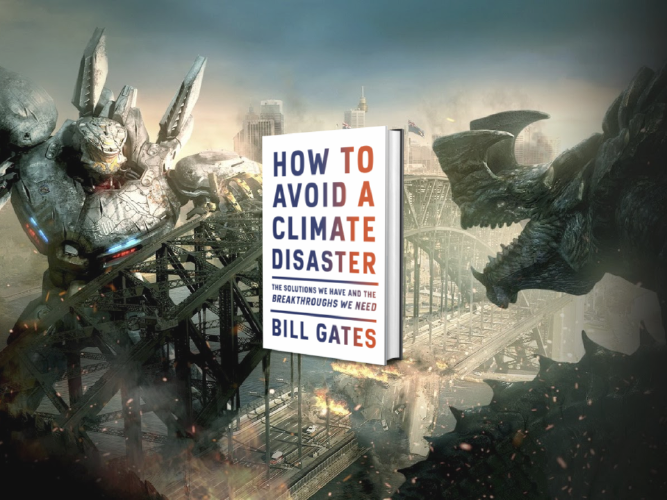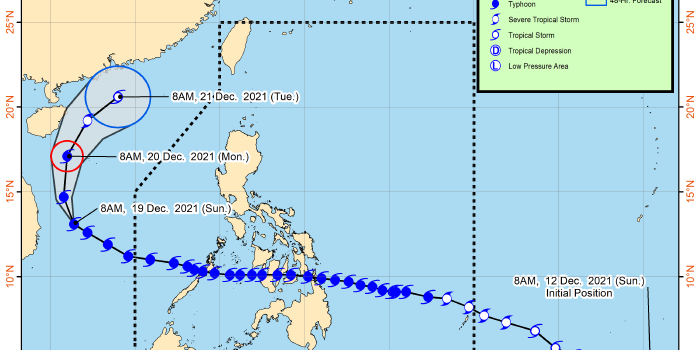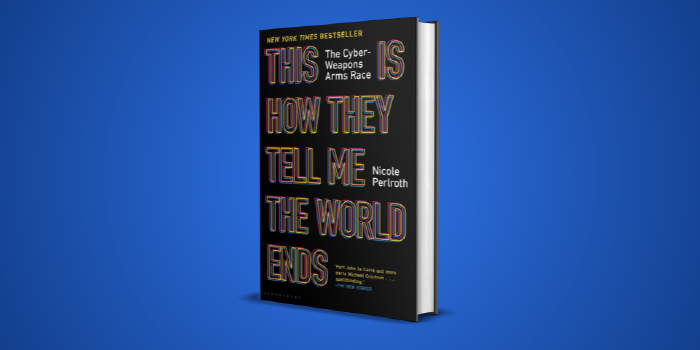What Do Bill Gates and Kaiju Have in Common?

They both want you to think about climate change.
Climate change isn’t sexy. Despite its massive importance to the survival of our species, talking about the climate isn’t fun. Any utterance of carbon dioxide, reflected sunlight radiation, or a 2°C increase in global temperatures will, more often than not, elicit a reaction similar to the prospect of watching paint dry. That is also the complete opposite reaction you would get when a giant monstrous creature from the depths of the sea the size of a building is stomping towards you. And yet, they both represent the same thing. An existential threat to the human race.
I am not the first to observe that the Pacific Rim’s kaiju are an allegory for climate change . In fact, kaiju have been used as representations for “larger than life” problems that have scared humanity since their inception .

In Pacific Rim the kaiju are specifically named and categorized by number. Exactly like how hurricanes are named and categorized in real life. And in the movie there is even a scene where they realize that the release of carbon dioxide into the atmosphere is what finally prompted the kaiju to start appearing. Starting to sound familiar?
Where the movie and real life diverge is in humanity’s response to threat. In the former, the world comes together and creates the jaegers 🤖 to fight the kaiju. In the real world, we have people throwing snowballs in a legislature .
Thankfully society has come a long way on the topic of climate change. We seem to be less intent on disputing its existence, and more focused on finding ways to manage it. But much like a kaiju, the size of the problem can be intimidating.
Enter stage-left: Bill Gates and his latest book How to Avoid a Climate Disaster.
Gates is not the first person to talk about climate change. By all accounts he is incredibly late to the party with this book. But he does introduce – and really hammers in – a concept that wouldn’t be out of place in Pacific Rim. Creating technological solutions to fight the problem.
In his book – and really most of his work – Gates espouses a philosophy of “innovating our way to a solution”. And that despite the magnitude of the problem that is climate change, the human race is completely capable of coming up with innovations to solve it. Unfortunately Gates is not suggesting that we build giant robots 🤖. But he does offer interesting – realistic – solutions, that if successful, would rival the awesomeness of jaegers.
Gates forecasts that in order to avoid a “climate disaster” the entire world would need to become carbon neutral by 2050. Through the course of his book’s 12 chapters, Gates works through how we can accomplish that with the precision you would expect from a computer programmer and data nerd.
He starts with a clear understanding of the problem. Climate change. Specifically, carbon emissions. What activities are the major contributors of our carbon emissions? From electricity generation, to how we make things, to how we grow our food, to how we transport ourselves. Gates works through each of these categories and talks about what exactly causes the carbon emission, and what can be done to reduce them to zero.
All throughout the the book Gates provides a plethora of data, analysis, and innovations that he’s personally seen and researched. Sprinkling in the occasional story to remind the readers that climate change is not some abstract concept. It is happening. And it has real impact on real people.
However, the book is not without its faults. Reviewers have (rightly) critiqued Gates for overemphasizing the role of technology, and discounting the adverse impact of politics and vested interests on combating climate change. Other criticisms hit a bit closer to home as they admonish Gates for being behind the curve on knowing how far green technology has already come.
This book is not going to be the be-all-end-all- bible for combating climate change. But it is still worth reding. The book is full of data relevant to the topic of sustainability. And offers insight on multiple different innovative solutions that we can use to continue to improve our quality of life without sacrificing the environment. I would say that it is a good primer for anyone that is not as familiar with the topic of climate change or sustainability but wants to learn more (like me).
The main point that Gates ultimately wants to make is valid, however. We can accomplish net-zero by 2050. Governments are making progress in that direction. And for their part, private companies are no longer seing investments in sustainable technology as just “doing good”; they see them as good business too . Like Gates, I’m optimistic of our chances.
We can come together. We can innovate solutions. We can fight the hurricane, and we can win 🤖.



